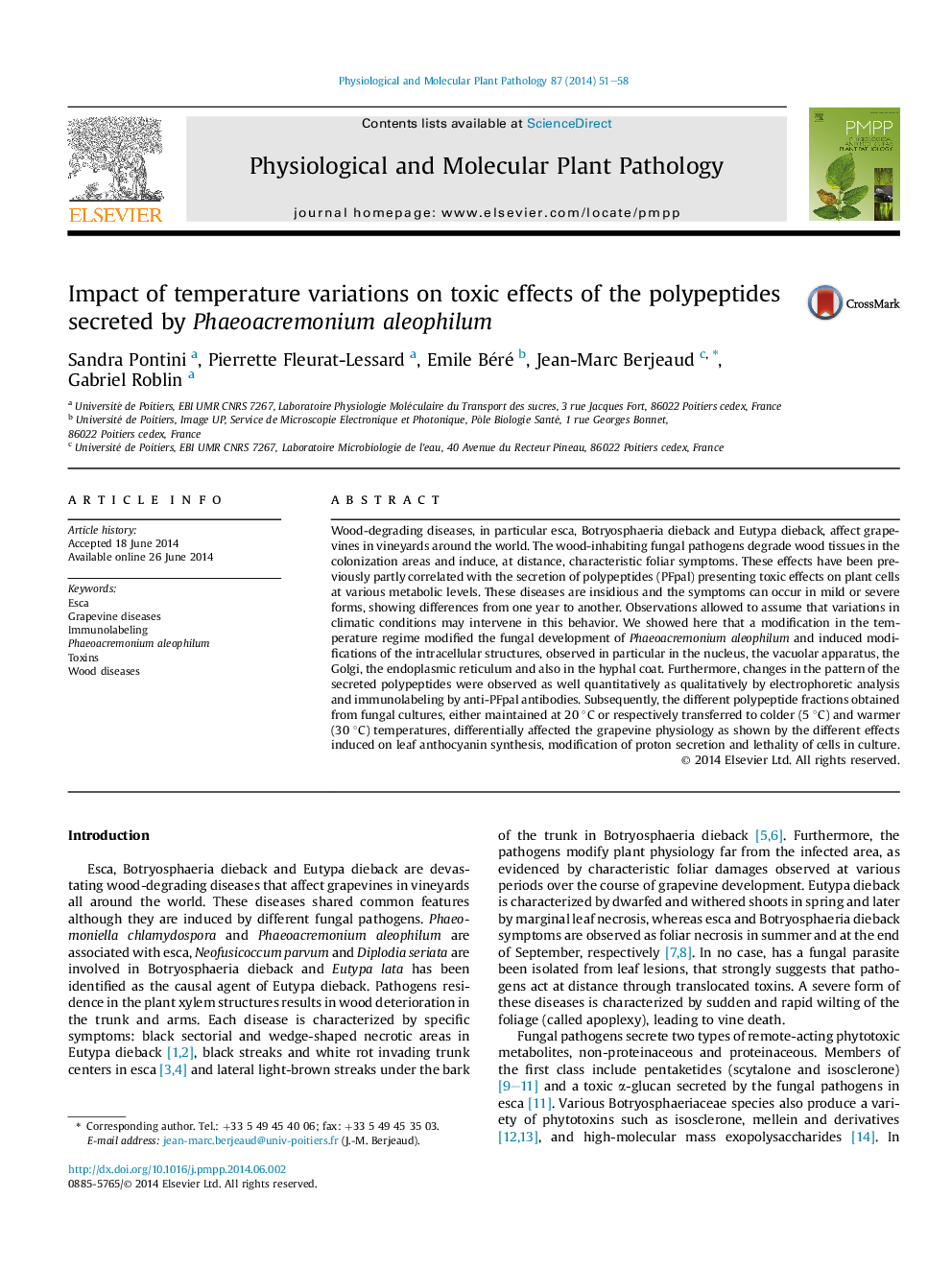| Article ID | Journal | Published Year | Pages | File Type |
|---|---|---|---|---|
| 2836343 | Physiological and Molecular Plant Pathology | 2014 | 8 Pages |
•Changes in temperature regime modified the growth of Phaeoacremonium aleophilum.•The treatment induced modifications in the ultrastructure of the hyphae.•The electrophoretic patterns of the toxic secreted polypeptides were modified.•The localization of the polypeptides, detected by immunolabelling, was modified.•The fungal polypeptides affected differentially 3 plant metabolic processes.
Wood-degrading diseases, in particular esca, Botryosphaeria dieback and Eutypa dieback, affect grapevines in vineyards around the world. The wood-inhabiting fungal pathogens degrade wood tissues in the colonization areas and induce, at distance, characteristic foliar symptoms. These effects have been previously partly correlated with the secretion of polypeptides (PFpal) presenting toxic effects on plant cells at various metabolic levels. These diseases are insidious and the symptoms can occur in mild or severe forms, showing differences from one year to another. Observations allowed to assume that variations in climatic conditions may intervene in this behavior. We showed here that a modification in the temperature regime modified the fungal development of Phaeoacremonium aleophilum and induced modifications of the intracellular structures, observed in particular in the nucleus, the vacuolar apparatus, the Golgi, the endoplasmic reticulum and also in the hyphal coat. Furthermore, changes in the pattern of the secreted polypeptides were observed as well quantitatively as qualitatively by electrophoretic analysis and immunolabeling by anti-PFpal antibodies. Subsequently, the different polypeptide fractions obtained from fungal cultures, either maintained at 20 °C or respectively transferred to colder (5 °C) and warmer (30 °C) temperatures, differentially affected the grapevine physiology as shown by the different effects induced on leaf anthocyanin synthesis, modification of proton secretion and lethality of cells in culture.
